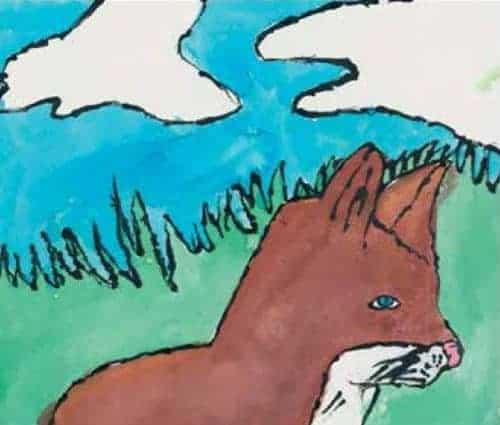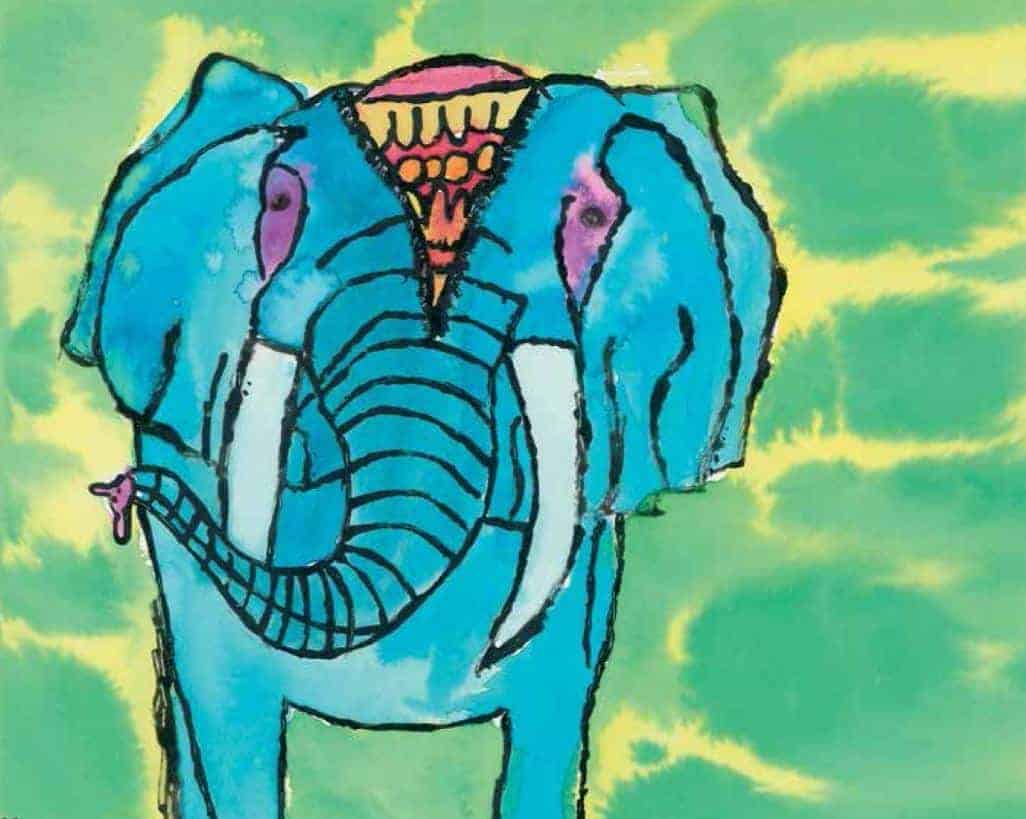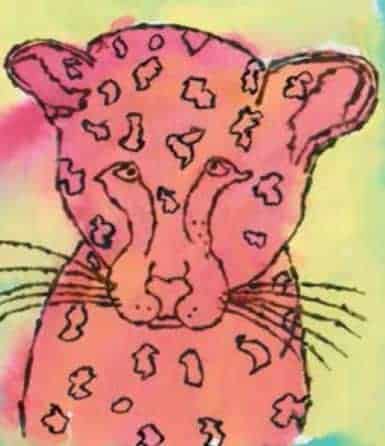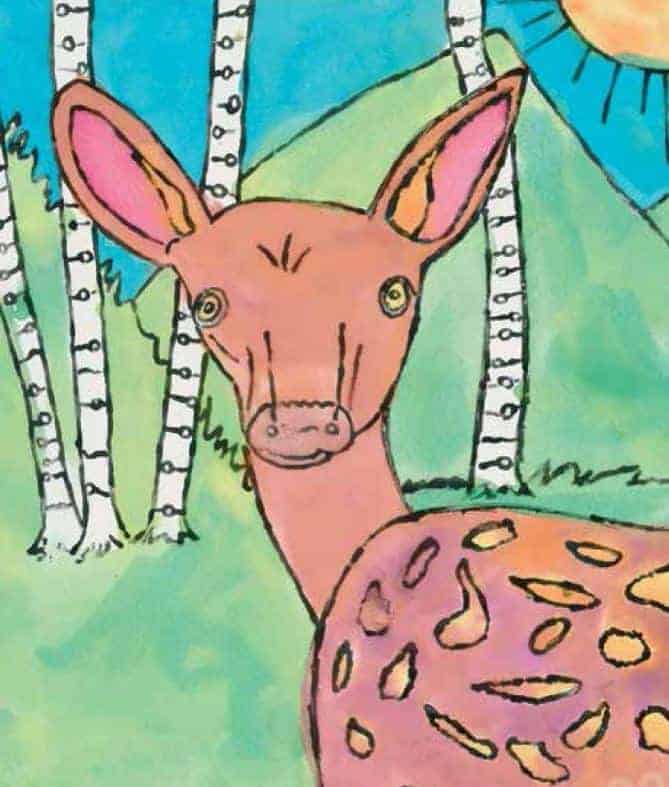The third-graders had only three class periods remaining for the year—a mere two and a half hours. My challenge was to present a project that would allow for a review of a large number of the terms and skills that has been studied throughout the year, while still providing the students adequate time to “illustrate” an understanding of the material.
The first order of business was a to decide on a subject matter and medium. Looking through my files of “projects I’d like to try someday,” I came across a page torn from an old art-supply catalog featuring one called “Glue Resist Watercolor Safari.” It inspired a project that perfectly fit my educational needs, not to mention the fact that children love to draw animals, I love the high contrast crated with a black glue outline, and who doesn’t love the ease of liquid watercolors.
Day One. Before beginning their drawings, we had a quick review of drawing from observation versus memory, filling the picture plane, close-up, environment, foreground, background, overlapping and texture. Students then chose to draw from memory, or from observing 3-D models, photos, and illustrations of an animal of their choice. Using pencil, they lightly sketched a close-up (head or whole body) of an animal and then added an appropriate environment if desired.

Elie

Charlotte
Day Two. Students finished their pencil drawings and then started outlining them with black glue. Many third-graders have a hard time controlling the flow of black glue squeezed directly from the bottle: The glue tips seem to either be clogged or large puddles are formed by squeezing too hard. As an alternate method of applying the glue, we used old wooden stylus sticks left over from scratchboard projects that we repeatedly dipped into small cups of glue and drew short strokes along the contour lines.
Applying glue with the sticks produced an irregular textured line that looked equally great as tough elephant skin and fuzzy-faced foxes. The black glue-outlined animals were then placed on the drying rack to await next week’s painting.

Jessie

Zoe
Day Three. We started with a review of watercolor terms and techniques, brush care, color schemes (complementary, cool/warm, analogous), realistic versus imaginary, dry brush, wet on wet, and resist. Then I set out the watercolor supplies and returned the students’ black glue drawings.
Before starting, students first chose a color scheme. Since the black glue separates shapes, it created a good resist that prevented unwanted color blending even when painted within a short time. Most students finished within 20-25 minutes.
This project was a perfect way for my third-graders to demonstrate their mastery of the materials, and a number of techniques and terms.
LEARNING OBJECTIVES
Elementary students will…
Draw with contour line an animal from observation or memory.
Create resist with black glue line.
Establish animal as the center of interest.
Use various watercolor techniques.
Identify and use color theory.
Use concepts of foreground and background.
MATERIALS
Pencils, black permanent markers
12”x14” watercolor paper
White glue mixed with black ink, wooden stylus sticks
Images and 3-D models of animals
Liquid watercolors, watercolor brushes and supplies
NATIONAL ART STANDARD
CREATING: Conceiving and developing artistic ideas and work.
PRESENTING: Interpreting and sharing artistic work.
Cheryl Crumpecker teaches K-3 Art at St. Paul’s Episcopal Day School in Kansas City, Missouri.
Reprinted with permission from Arts & Activities magazine. Visit their website: www.artsandactivities.com
The post Animal Options – A Year in Review appeared first on Schoolyard Blog | Teacher Resources | School Specialty.